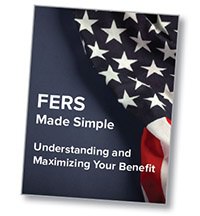How to Withdraw Money from a Federal Government TSP at Retirement
June 6th, 2019 | 3 min. read

Has this ever happened to you? You go to a restaurant, read the menu and then suddenly find yourself seemingly paralyzed. Though you’re hungry, you can’t decide what to order. The Cobb salad or the cheeseburger? You’re overloaded with options, and you fear that whatever you order, the other meal would have been better.
This is known as analysis paralysis. When confronted with an abundance of choices, people can often overthink the situation and essentially lose their ability to make decisions.
But it’s not just a problem of having too many choices. It’s also the quality and amount of information we’re given as we make those choices.
We all know saving in a 401(k) is a wise decision. And, generally, the more fund options, the better. You have more ways to diversify your account and lower your investment costs. But studies have shown that if more fund options are offered in a 401(k) plan, fewer people participate. This is because participants struggle to differentiate between all the funds while overloaded with complex investment information from their benefit materials. It’s not surprising then that the highest participation rates are among employees that are automatically enrolled in their company’s plan, unless they choose to opt out.
Federal government employees may find themselves at risk of analysis paralysis when it comes time to retire. The Thrift Savings Plan (TSP) offers more withdrawal choices than your average 401(k). How you choose to withdraw your money greatly impacts the outcome of your retirement.
It is important then to carefully choose your withdrawal options as well as your withdrawal amounts. Excessive withdrawals can reduce the likelihood of a successful retirement. Meanwhile, overly frugal withdrawals could diminish your quality of life in retirement. If not equipped with the right information, you could make the wrong decision. And, there’s no re-do.
To help you not only make a decision, but the right decision, let’s take a look at the various TSP withdrawal options and how they work.
Partial TSP withdrawal
You can withdraw a portion of your assets while saving the remaining balance in the TSP for later. This option, however, is not available to those who have taken an in-service withdrawal in the past.
Full TSP withdrawal (single payment)
This option allows you to withdraw the full balance of your TSP account, either as a lump-sum cash payment, which is a taxable distribution, or transferred directly to an individual retirement account (IRA), which is not a taxable distribution.
IRA transfer
An IRA transfer is often the best option for most retirees. Although the TSP offers solid investment options to grow your assets as you’re working and saving, it may not provide the diversity, tax efficiency, investment selection and flexibility that can better provide a reliable and sustainable stream of income throughout your retirement.
An IRA has the following benefits over the TSP:
- Greater diversification. The TSP often lacks the diversification needed to create a balanced, risk-controlled portfolio. IRAs offer retirement investors access to almost any investment available to help meet specific income needs and future goals.
- Flexibility. An IRA gives you the flexibility to purchase or sell investments as economic conditions or your needs change. Sometimes new investment opportunities or life events, such as a death of a spouse, will necessitate adjusting your investments.
- Easy access to your assets. With an IRA you can quickly raise and access cash for expenses, especially for unexpected costs such as medical emergencies or home repairs. Of course, this ability can also be a drawback to those who struggle to control their spending.
- More low-cost options. Although the TSP is low cost, you can find comparable or cheaper investments in an IRA that offer far greater selection, flexibility and customization. The lower your investment costs, the more of your return you keep.
- Professional management. When your savings are in an IRA, a financial adviser can help you choose investments that appropriately fit your financial needs and goals. Additionally, an adviser can directly adjust your portfolio as market conditions or your needs change.
TSP Monthly Payments
This option allows you to withdraw a specified amount payable each month or an amount payable each month based upon your life expectancy. Once a year you have the option to change this amount or take the remaining portion of the TSP as a full withdrawal.
TSP payments based on life expectancy should be avoided for one good reason. It may sound like a good idea until you live longer than your life expectancy.
TSP Annuity
If you select this option, the TSP purchases an annuity on your behalf that is payable monthly to you for the remainder of your life or your spouse’s life. This option can be elected using the full balance or a portion of your TSP. (The annuity is purchased from a private insurance company.)
Although guaranteed monthly income may sound attractive, the annuity option has some major drawbacks. Buying an annuity will restrict your ability to take out additional money when unexpected expenses occur or as living costs increase. Also, you will be unable to pass on an inheritance upon your death.
If you’re worried about running out of money in retirement, remember, under FERS you already have two non-variable assets for retirement: Social Security and the Basic Benefit ("monthly annuity"). No matter what happens, these two assets will continue to pay a prescribed amount every month that will increase over time with cost-of-living adjustments. Your TSP, therefore, should be left available to provide a key strategy for generating income and growing assets.
Learn more about government retirement benefits, including the FERS basic benefit, the Thrift Savings Plan and other retirement planning steps, by downloading our free, easy-to-understand guidebook, FERS Made Simple: Understanding and Maximizing Your Benefit. (click the button below)

Advance Capital Management is a fee-only RIA serving clients across the country. The Advance Capital Team includes financial advisers, investment managers, client service professionals and more -- all dedicated to helping people pursue their financial goals.

